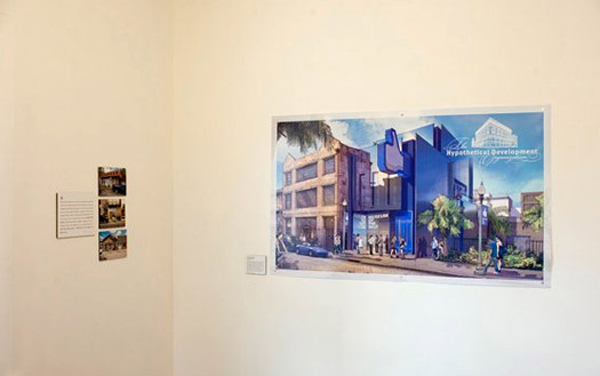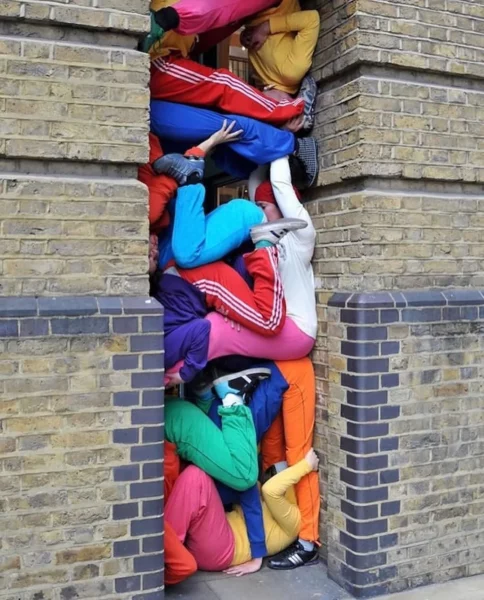Design fictions

A few months ago I wrote about the Hypothetical Development Project, a collaboration between Rob Walker, Ellen Susan, and G. K. Darby to create “imagined futures” of abandoned buildings, expressed through mock architectural renderings. Over on Places, Rob Walker now has a great piece relating the story of the project, as well as its role in the context of architectural fiction. (The piece also quotes some thoughts from the original Aesthetics of Joy writeup.)
On the surface, design fiction is an odd concept. Design is a functional discipline, a craft driven to make ideas tangible, to concretize solutions into usable forms. Design operates on the principle that by distilling imagination into form, it becomes truth. People can dislike a thing, dispute its purpose, disagree with its intentions – but they cannot deny it exists.
On the other hand, fiction is a lie. A welcome and seductive lie, perhaps, but still a non-truth. And the subject of a lie does not exist beyond the world of its own narrative. So within “design fiction” there is a tension – between tangible and ephemeral, existence and non-existence, imagination and reality. Walker rightly points out that many of the architectural renderings we see are just this kind of designed fabrication. (Many are created as marketing gestures, but the projects they show are never funded and therefore never built.) In this sense, they are less lies, and more, as I noted in my original assessment, manifestations of hope and desire. Unable to predict THE future, they instead try to depict A future, a kind of illuminating untruth. What is illuminated? As Walker points out, both something in the abandoned structure, the forlorn substrate of the fiction, and in the viewer themselves.
The moment that interests me most, I suppose, would be the random passerby who suddenly notices that building he or she has walked past a hundred times, just because there’s this sign on it, this arrestingly uncanny sign that tells a story that’s blatantly and intentionally absurd. I think that moment — the story, in one image, of an implausible future for an unpopular place — makes the building exist again in a new way. It changes nothing into something.
I think it makes the passerby exist in a new way, too.
The role of designer as storyteller is not a new construct in the design world, but I think this project gives it new resonance, or at least reminds us that the value of conceptual design (even absurdist conceptual design with no hope of being made real) need not be subordinate to the design of the functional here-and-now. Design fiction gives us places to go. It highlights features and flaws. It expresses wishes in a voice much nicer than a whine. In some ways, it is a necessary precursor to “real” design, if we want that design to represent progress, and not just continuation.
I say all of this as a former fiction writer, one with great respect for the simple joy of a story told for its own sake. While as a designer I am tempted to look for a practical application for Hypothetical Development, as a writer I’m happy for it just to just contribute to the general joy of our surroundings. As Walker writes, “…I don’t think a story needs to be considered a means to an end. A story is an end. And a sign on an abandoned building is as good a medium as I can think of for telling an entertaining tale.” The beauty of design fiction is the way it fuses the storyteller’s art with the evocative palette of the form-crafter. It’s a rich space, and if I take anything away from the project, it’s that many, many entertaining (and inspiring) tales are waiting to be told.
Places: Implausible Futures for Unpopular Places





Leave a Comment